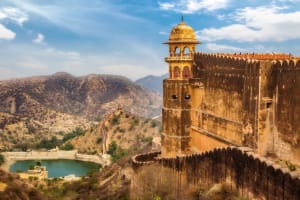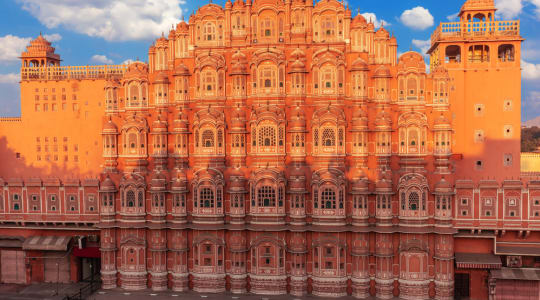Hawa Mahal is a palace located in Jaipur, Rajasthan, India. It is also known as the "Palace of the Winds." The palace was built in 1799 by Maharaja Sawai Pratap Singh and was designed in the shape of a crown. The name "Hawa Mahal" is derived from the word "hawa," meaning wind, and refers to the building's unique architecture, which allowed for maximum air circulation.
The palace is made up of a series of small rooms, balconies, and terraces that are adorned with intricate carvings and latticed windows. The five-story building has a unique honeycomb-like structure with 953 windows, called "jharokhas," which were used by the royal women to observe everyday life in the city without being seen. The palace is a magnificent example of Rajputana architecture, with its ornate, pink sandstone facade, detailed carvings, and intricate jaali (lattice) work.
Today, Hawa Mahal is one of Jaipur's most popular tourist destinations and is often used as a symbol of the city. Visitors can tour the palace and admire its stunning architecture, as well as learn about the history and culture of Rajasthan. The palace has been well-preserved and is now a museum that displays various artifacts, including paintings, textiles, and traditional musical instruments.
Explore Near Hawa Mahal
Discover 5 attractions, 3 cities, and 1 airport within 75km. Perfect for planning day trips, finding connecting flights, or discovering new destinations to explore during your visit.
Nearby Attractions & Places to Visit
5 destinations within 242m - 7.3km from your location





Nearby Cities Worth Exploring
3 destinations within 3.9km - 50.6km from your location
Airports Near Hawa Mahal
1 destination within 11.2km from your location
Cross-Border Adventures Near Hawa Mahal
Discover cross-border adventures near Hawa Mahal. Explore neighboring countries with similar attractions and extend your travel experience across borders.









